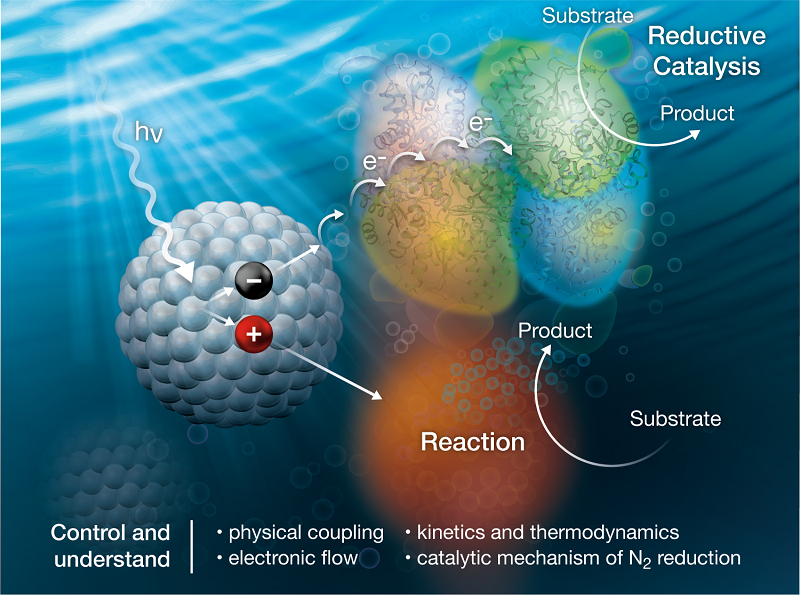The Science
The Impact
This biohybrid approach uses sunlight to drive the energy-demanding conversion reactions that can mitigate the co-production of greenhouse gases. The standard approach to making ammonia is the Haber-Bosch process. This process produces about 150 million metric tons (MmT) of ammonia per year but requires large amounts of energy and also produces about 280 MmT of carbon dioxide (CO2). The new process uses sunlight to catalyze NH3 production without generating CO2. It is also an attractive way to produce NH3 fertilizers close to where they will be used, minimizing CO2 emissions from shipping to farms. Making this process a reality requires understanding how to couple sunlight to drive the reaction.
Summary
To produce ammonia using sunlight, research scientists developed a biohybrid system composed of nanocrystals and the enzyme Mo-nitrogenase. This enzyme has a unique metal cluster, termed the FeMo-cofactor, that requires eight electrons and eight protons to reduce N2 to ammonia. The researchers used this nanocrystal/enzyme system to determine how to direct photogenerated electrons to the FeMo-cofactor and to study the related mechanism. For the system to rely on light, the nanoparticle and enzyme must be chemically compatible and form a stable reaction complex. This research explored how to make nanoparticles that bind to the enzyme.
This approach provides insight into how to synthetically tune nanocrystals to bind enzymes and to transfer charge selectively. Taking advantage of this progress, researchers can study the process in detail. In the frozen state, the FeMo-cofactor reaction intermediates can be trapped and analyzed in detail by electron paramagnetic resonance spectroscopy techniques. This technical foundation enables researchers to identify reaction intermediates, the activation energies of the reaction steps, and evolution of a kinetic model of the N2 reduction reaction.
Funding
Funding was provided by the Department of Energy Office of Science, Office of Basic Energy Sciences, Division of Chemical Sciences, Geosciences, and Biosciences, Physical Biosciences and Solar Photochemistry Programs.


